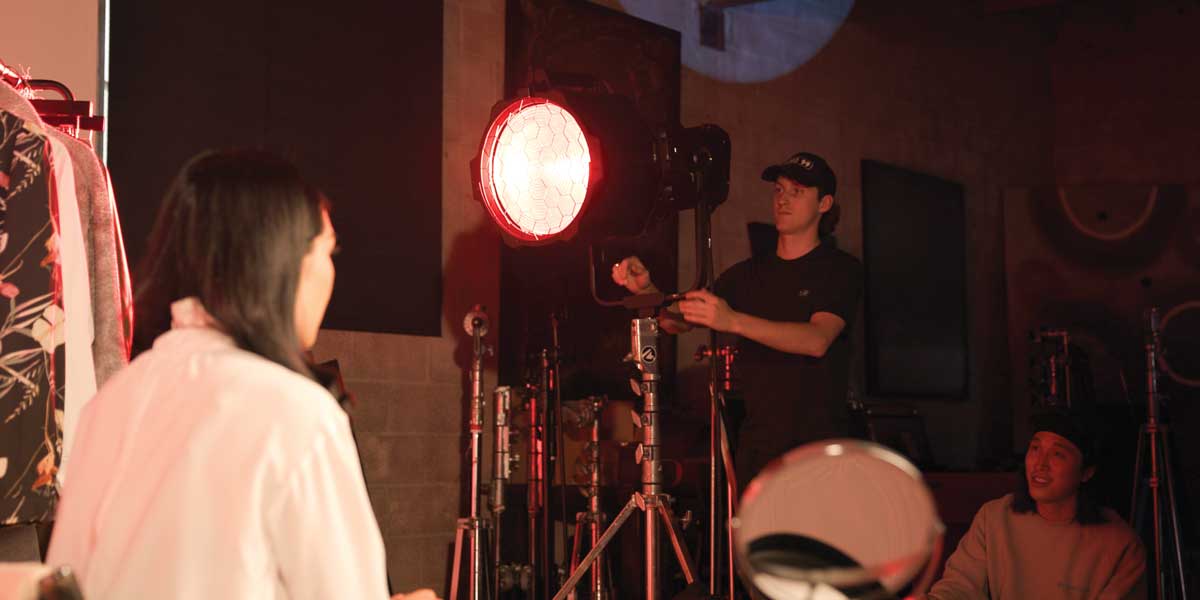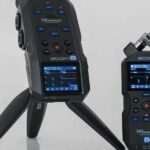
Your kit queries sorted by CVP’s experts
Posted on Sep 13, 2024 by Pro Moviemaker
When it comes to in-depth experience with equipment, the technical gurus at Britain’s top filmmaking retailer are second to none – and here to help
Advertisement feature
There seem to be a lot of video transmitters on the market that are more affordable. But what should I look for when buying into a system?
When investing in a wireless video system, there are a couple of things you want to consider. The first is device connectivity. Depending on the camera and monitor you are using, you will need to decide whether you need HDMI, SDI, both – or you want to be able to stream to a mobile device.
Next is the system’s latency. Unlike the more expensive zero-delay systems, many cheaper products will incur different levels of latency in the transmission. This might not be suitable if it’s being used to pull focus, but will be acceptable if it’s being used for a client monitor. The system’s range is another thing to consider as this can vary from 100m up to 3000m. Lastly, think about what distribution you will need from your transmitters. Different systems will have different limits on how many RX units or phones can be paired up with your TX unit.
I would like to mount my Sony A7S III to a motorcycle in order to get some dramatic shots. Is there a kit I should buy?
You might need different solutions depending upon what part of the bike you are looking to mount the camera. One small, simple and inexpensive solution is the Movmax Suction Cup. It’s designed for cameras just like the A7S III and can be configured with different brackets and arms for extra flexibility. Don’t forget to also add a safety cable between your bike and the camera using the strap loop.
Does the Blackmagic Pyxis 6K have the same sensor as the Cinema Camera 6K? As a user of EF lenses, it seems like an ideal partner to my Cinema Camera 6K as the footage should match. So will the output be identical?
Both the Blackmagic Cinema Camera 6K and Pyxis 6K share the same full-frame 36x24mm 6K sensor, recording formats and Gen 5 colour science, enabling you to shoot identical footage across each system. The box-style body of the Pyxis means it has a side monitor, EVF, BP-U battery port and improved I/O, so makes the perfect A cam to a Cinema Camera 6K.
What are the best budget Micro Four Thirds lenses for pop videos? I’m looking for something versatile that works in low light – and doesn’t distort the image too much unlike my extra-wide Laowa Stargazer 7.5mm. I need glass that takes in the whole stage!
Laowa makes a series of great lenses for Micro Four Thirds. If you want something wide but with minimal distortion, look at the 6mm and 9mm Zero-D cine primes. There is a slightly tighter 10mm Zero-D that’s much more budget-friendly and has a fast f/2 aperture. If you want something faster for low light then Laowa’s new Argus primes could be an option with their fast f/0.95 apertures. 7Artisans is another company offering very affordable Micro Four Thirds lenses, but we haven’t tested these just yet.
For a soft light to shoot one-person interviews, should I invest in an LED panel or a COB with a softbox? What are the pros and cons of each?
LED panel lights typically offer a more compact footprint. As many are built with a diffusion panel, you won’t always need an extra modifier to soften the light. You may still want to add this extra layer of diffusion, but softboxes for light panels are relatively small and can still result in a compact lighting set-up. COB lights, however, will have a mount on the front (usually a Bowens mount) that offers more choice in size and style of modifier – and with the size of the softboxes available you can achieve a far softer quality of light.
If you want a less intrusive, lighter set-up, go light panel. If you want more control over the shape of your light and a softer output, go for a COB with a softbox.
I love the anamorphic look but can’t afford a set of lenses for occasional use. Are there any accessories or filters that can help me get the look, like the blue streaks and oval bokeh?
The Blue Streak filter is designed specifically for that effect. Different versions can offer different strengths, and many can look a bit over the top compared to a true anamorphic flare, but it’s an easy step towards faking the aesthetic. One thing you may notice with these filters is line artefacts in your bokeh. The shape of your bokeh is a result of the shape of your iris, so if you are looking to get oval bokeh to fake that stretched anamorphic look, you might want to play with some old vintage stills lenses like the Helios 44-2. Many of these are easy to take apart, allowing you to get into the iris blades and add an oval cutout to change the bokeh.
Got a question for CVP experts? Email [email protected] and leave it to us!
This feature was first published in the September/October 2024 issue of Pro Moviemaker.










